Graphics Design
41.Mastering Mockups Design Crafting Realistic Visual Prototypes

Mastering Mockups Design Crafting Realistic Visual Prototypes
Mastering mockups design crafting realistic visual prototypes therefore, are intermediate representations in the designs of concepts through to the actual implementation. It is obvious as they help to conceptualize products, websites, applications, and other promo materials before the actual creation of the final output. Regardless of the fact whether you are a graphic designer, a web developer, or a product designer, learning about the ways of mockup designing and implementing them in your projects can enhance your work to the extent you will be glad to see.
What is a Mockup?
Mastering mockups design crafting realistic visual prototypes is a replica of a certain design that can be used to provide physical and visual experience of the final product to the various stakeholders before it is developed. As opposed to the wireframes that are generally intended to define the frames and sections of a site, mockups add all the available colors, typography, images, and any other applied details to give a more refined outlook of the website.
Mockups are used in various design disciplines, including:
Graphic Design: Producing images of branding materials and media ad and print products.
Web and App Design: Explaining how the site or app looks and works on various devices in which it can be accessed.
Product Design: Stating the appearance of physical tangible products before production.
The Role of Mockups in the Course of Design

Mastering mockups design crafting realistic visual prototypes play a vital role in the design process for several reasons:Mockups play a vital role in the design process for several reasons:
- Visualization: They enable the designer and the client to have a feel of how the final product is going to be like thus hastening the understanding of the discrepancies between them.
- Feedback: Using mockups one might get the feedback from the clients and stakeholders. They can identify a problem or a modification that might be made before it is incorporated into the actual product.
- Presentation: Clients, investors or the team members require mockups to assess ideas, which makes it crucial to have good ones. They give designs a more physical look and complete the job.
- Testing: Mastering mockups design crafting realistic visual prototypes give the designer a chance to try layouts and graphics and other ideas and components which would not be instantly possible in actual design.
Types of Mockups

Templates can differ depending on the media used and the stage of the design process. undefined
1. Print Mockups: These are business cards, posters, brochures and other printed and digital products. To solve this problem, designers create mockups and demonstrate how those products will look in real life and, if necessary, using the texture of the paper, fold lines, or color depth.
2. Digital Mockups: These are frequently used in web and application design. They illustrate the last look of websites or any other application on different gadgets like mobile, tablets, or PCs.
3. Product Mockups: In the manufacturing context, mockups give a preview of how the tangible product will appear in its operating context. This is important in areas such as packing, fashion, and manufacturing or anything that needs creations in the shape of the final products.
4. 3D Mockups: Mastering mockups design crafting realistic visual prototypes of a product or an environment is frequently created using 3D modeling. These mockups are also perfect for exploring as it gives the users more of a feel of what is in store for them.
Tools for Creating Mockups
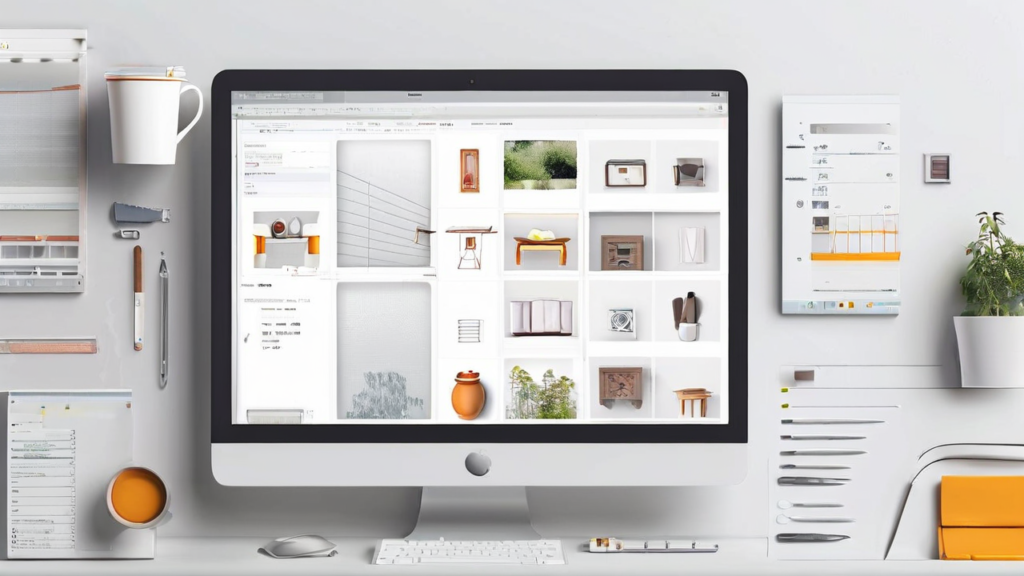
There are several tools available for creating mockups, catering to different design needs:There are several tools available for creating mockups, catering to different design needs:
- Adobe Photoshop: MockupMastering mockups design crafting realistic visual prototypes can be one of the most detailed as well as realistic ones when made with the help of Photoshop. Smart objects can also be worked on as copies where designers can edit regarding templates thus making it easy to design.
- Sketch: Sketch is a vector tool that perfectly fits in the creation of mockups of digital products. It has become popular among web and app designers because of its relatively clear interface and the range of features.
- Figma: Figma is an application that remotely design by synchronizing on the cloud for group collaboration. This is suitable for producing digital prototypes especially for the software such as web and application interfaces, and also easily shareable with clients or other teams.
- Adobe XD: Adobe XD is particularly built for UX and UI design. It provides effective instruments for such navigational experiences that includes tools to build layout version of website and application.
- Canva: For those in search of a less complex tool, there is a range of templates for creating mockups clad in Canva’s easy to use interface. This model is particularly suitable for first-time users or those with small, less complex projects such as posts on social media, or print products.
- Mockup World: Mastering mockups design crafting realistic visual prototypes is a website that has available free and paid mockups templates. There are many ready made mockups for product designs ranging from clothes, electronics, packaging and much more that designers can use.
Thus, How to Create Effective Mockups?

Designing a good mastering mockups design crafting realistic visual prototypes is not just about placing your work into a template though as much more goes into it. Here are some best practices to follow:Here are some best practices to follow:
1. Understand the Purpose
To make a mastering mockups design crafting realistic visual prototypes first of all, its function must be determined. Is the memo for the client’s approval, for the supervisor or manager’s signature or for advertising purposes? The purpose will determine the level of realism, which will be needed for various components. For instance, the objective of some mockup might be client approval thus the mockup should be as real as possible while in the case of having an internal mockup, the main focus might be the functionality of the mockup not the appearance.
2. Choose the Right Medium
But the medium of your mockup must be the same as the final product. You if you are planning a website then use prototypes that depict how the website will look on any device. For print products, make prototypes of how the intended design will be on the actual material to be used. Choosing the right medium assures the right expectations to be made on how the final product will look like.
3. Focus on Realism
Mastering mockups design crafting realistic visual prototypes is an exercise designed to mean looking as close to the final product as possible. Enjoy image content and formation, with pay to some of the features such as lighting, shadows, texture, and scaling. These features are simple but can help to make a mockup more realistic and help the stakeholders better understand the result.
4. Incorporate Context
Context is very important when it comes to design of the mockup. For instance if you are developing packaging, depict the product as it will be: on a shelf, held in someone’s hand. This enables client and other stakeholders to be able to have an impression of the product especially in its area of application.
5. Maintain Flexibility
Although it is important that mockups are like real-life, they should also be elastic. Do not become too rigid with some of the designs as feedback may be given that demands a change on specific features. Make sure to work with tools, which enable quick modification of the design; this means that the user should be ready to give multiple attempts.
6. Present Multiple Options
Most of the time in creating mockups especially to the clients, it is advisable to give different options. This makes the client have many options that he/she can take and it also enables the client to be more precise with the feedback he/she wants to give. The putting into question of the colour scheme, typeface, or form can generate more efficient debates and consequently a more successful final outcome at Silo.
Mockups and their place in branding
Mastering mockups design crafting realistic visual prototypes are vital in branding since they give companies a feel of how branding will be done across the different channels and media. Starting from business cards and letterheads, up to packaging and electronic media covers, mockups are useful in maintaining consistency and cohesiveness in all promotions.
1. Brand Consistency
Mastering mockups design crafting realistic visual prototypes, the designers are also able to keep an eye on logos, colours, typography and other branding aspects that are used in the branded collateral. Seeing these elements in a real-world application allows the designer to manipulate the variables in order to maintain a clean brand image.
2. Client Buy-In
Mastering mockups design crafting realistic visual prototypes it is therefore not an operation that an organization carries out in isolation but with the assistance of other people. The function of mockups is to ensure that the clients provide their approval mainly because the branding process will be executed realistically through various scenarios. This assists the clients in having an idea of the extent to which the brand can develop and also it is easier for the clients to visualize the end product.
3. Marketing and Advertising
In marketing and advertising, mastering mockups design crafting realistic visual prototypes are employed to capture campaigns before they are established. With the billboard advertisement, social media advertisement, and the packaging design, mockups help the marketer or the designer to visualize the strategies designed. This avoids wastage of resources in a wrong direction and also guarantees that the campaign is in tandem with policies of the brand.
Web and Application mockups
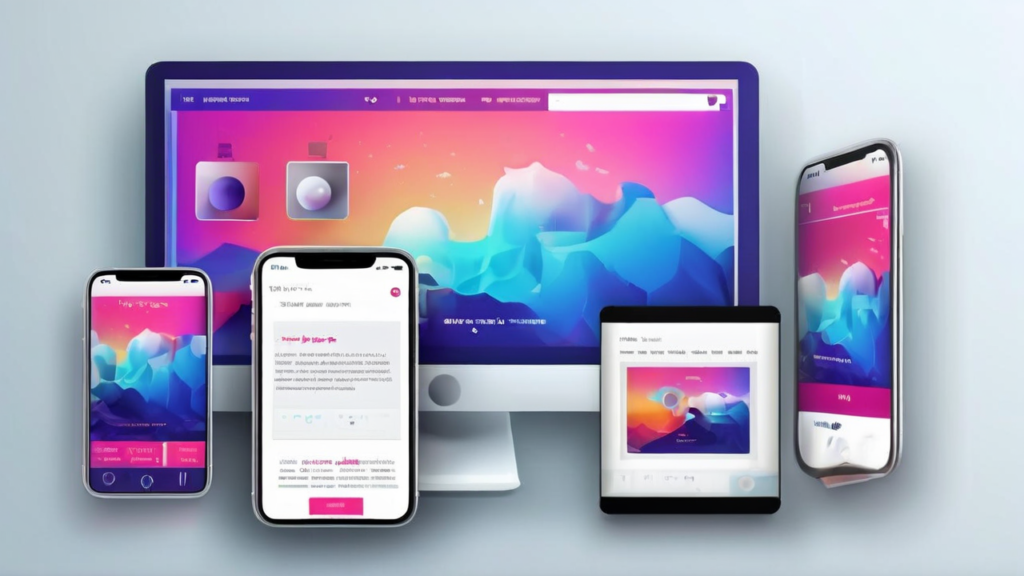
Mastering mockups design crafting realistic visual prototypes are vital in web and app design since the user experience and the interface are very important. It enables the designers to consider how a particular design is likely to work within various devices and within various screens.
-
Responsiveness
Mastering mockups design crafting realistic visual prototypes web and app design is extremely important, with one of the major issues being to maintain a responsiveness of the product for different devices. Using mockups, designers can see how the design looks if implemented on smartphones, tablets, or desktops and fine-tune it if necessary.
-
User Experience
Mockups are also used for UX testing where one wants to assess the usability of the product. It is a great advantage for the designers to be able to visualize how the buttons, navigation and other interactive parts of the product will look like when complete. It assists in early detection of usability problems in the design process.
3. Client Communication
Mastering mockups design crafting realistic visual prototypes are useful for clients who may not be familiar with design or development terminologies and this will give them an overview of the project. They allow clients to easily make comments on the work being done and guarantee that the work meets their satisfactory or unsatisfactory level.
The Future of Mockups
Mastering mockups design crafting realistic visual prototypes we see how with time the approaches to designing mockups changes with advancing technology. In the future, we are likely to see even additional specifically upgraded mockup tools that include AR or VR for even more realistic experience.
1. Augmented Reality Mockups
Mastering mockups design crafting realistic visual prototypes in such a case, designers are capable of developing the brief that renders the real world through the smartphone or the AR glasses so that the stakeholders are able to have an idea of how the targeted product will be like. This proves most advantageous in product design, in interior design and in architecture as well.
2. Virtual Reality Mockups
Mastering mockups design crafting realistic visual prototypes Compared to other simulation techniques, VR mockups promises to bring the stakeholder effectively into an environment through what can be termed as presence. This technology is particularly useful where dealing with space and movement or in applications such as architecture and game design.
3. AI-Driven Mockups
Mastering mockups design crafting realistic visual prototypes Another area that is experiencing the increased application of AI is also the creation of mockups. AI-based tools may also provide potential to produce mockups automatically which may help designers. These tools can ,for instance, take design aspects, and it will create natural prototypes from the data inputted by the designer.
Conclusion
Mastering mockups design crafting realistic visual prototypes Apart from being a useful aid in the design process, mock-ups make it possible to assess the final look and feel of a product before going to actual production. Mockups are useful at any stage of a design or marketing project, for a web application or website, or even for a physical product and thus effective mockup design can significantly improve your project outcomes.
It shall also be appreciated that the various types of mastering mockups design crafting realistic visual prototypes are known, which tools should be used, and some other recommendations.
Graphics Design
Top 10 Best Graphic Design Tools for Beginners in 2025 (Free & Paid)
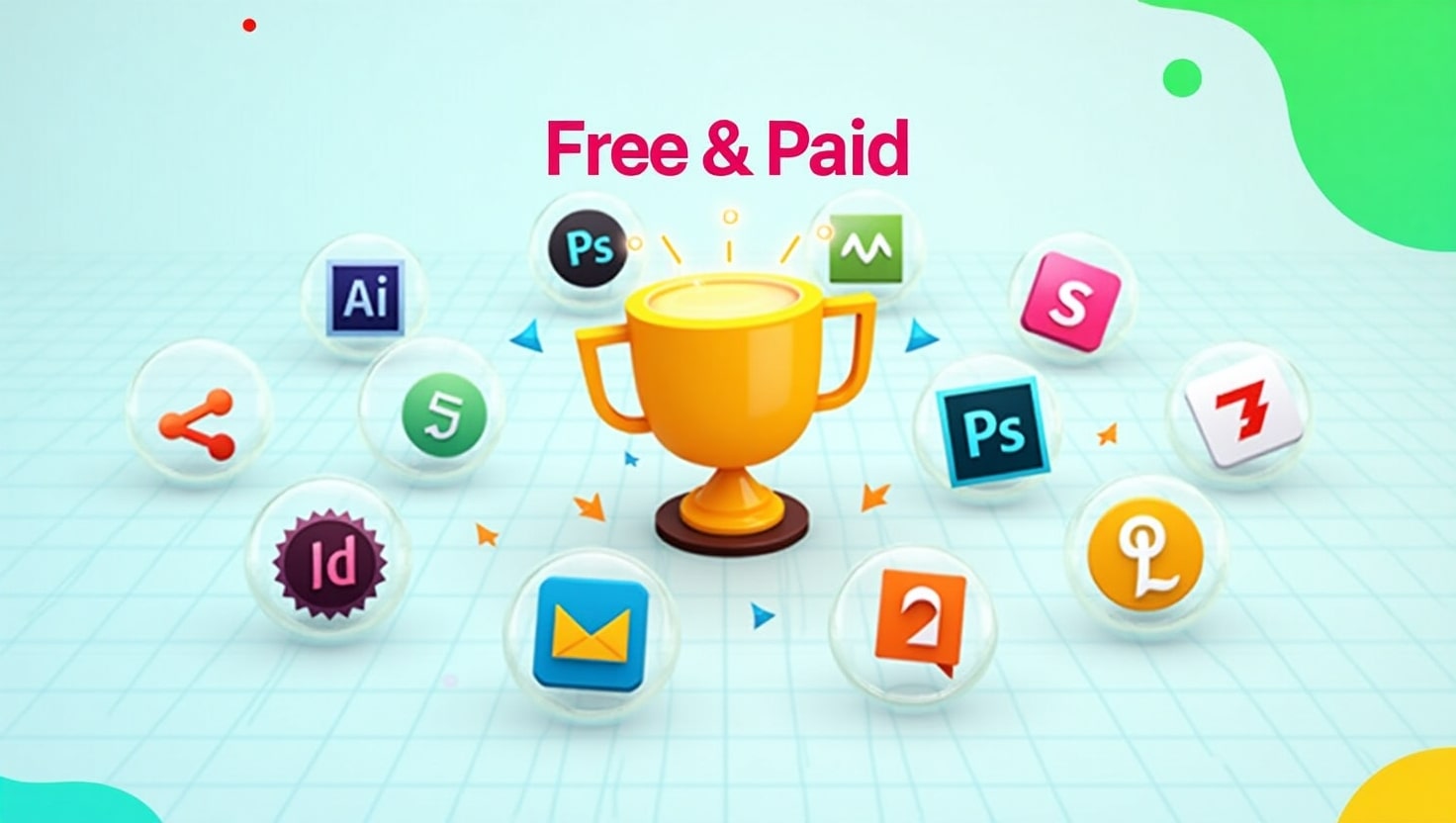
Top 10 Best Graphic Design Tools for Beginners in 2025 (Free & Paid)
Introduction: Why Beginners Need the Right Tools
Best graphic design tools for beginners can be exciting but also overwhelming. With so many tools available, it’s easy to get lost in the options. As a beginner, you need graphic design tools that are easy to learn, affordable, and feature-rich enough to help you grow. Whether you’re designing logos, social media posts, or website graphics, the right software can make all the difference.
In this article, we’ve handpicked the top 10 best graphic design tools for beginners in 2025, including both free and paid options. Whether you’re looking to go pro or just explore your creativity, there’s a tool here for you.
1. Canva – Best for Simplicity
Type: Free & Paid
Platform: Web, iOS, Android
Canva is best graphic design tools for beginners who want to dive into design without the steep learning curve. With drag-and-drop features, pre-made templates, and an intuitive interface, Canva allows anyone to create professional-looking graphics in minutes.
Key Features:
- Thousands of free templates
- Easy-to-use interface
- Perfect for social media posts, presentations, and posters
- Team collaboration options
Why it’s great for beginners: You don’t need design experience to use Canva. It’s as simple as choosing a template and customizing it.
2. Adobe Illustrator – Industry Standard
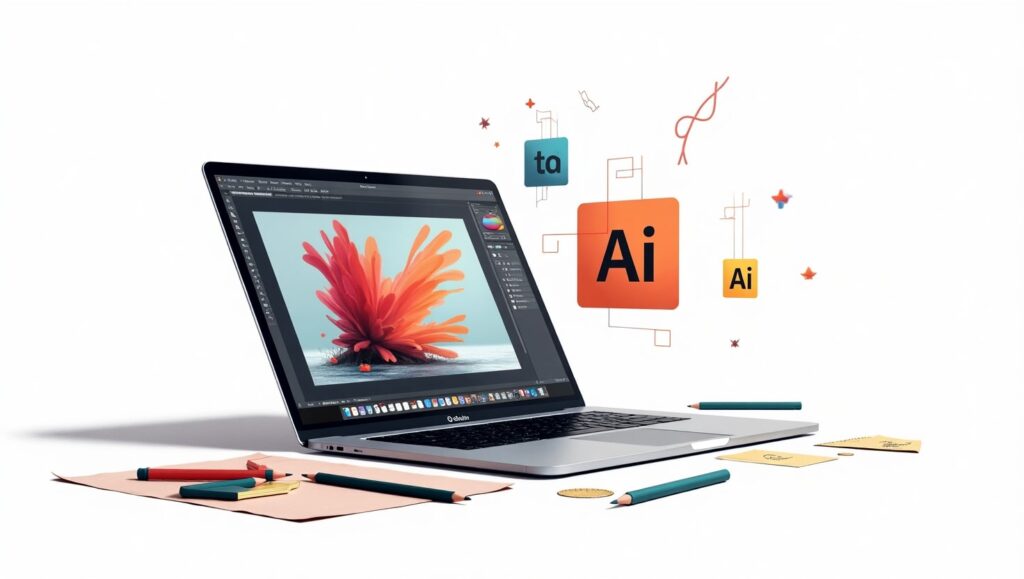
Type: Paid (Free trial available)
Platform: Windows, macOS
If you’re serious about pursuing best graphic design tools for beginners professionally, Adobe Illustrator is the go-to tool. It’s used by top designers around the world for creating logos, icons, typography, and complex illustrations.
Key Features:
- Precision vector design
- Integration with other Adobe apps
- Extensive typography tools
- Custom brushes and effects
Why it’s great for beginners: Though it has a steeper learning curve, beginners can start with tutorials and gradually master this powerful tool.
3. Figma – Collaborative Design

Type: Free & Paid
Platform: Web-based (with desktop apps)
Figma is a browser-based UI and best graphic design tools for beginners that’s widely used for interface design and collaboration. It’s especially ideal if you’re working in a team or planning to get into UX/UI design.
Key Features:
- Real-time collaboration
- Cloud-based autosave
- Works on any platform
- Design + prototyping in one tool
Why it’s great for beginners: It’s free to get started and encourages team-based design, which is perfect for learning in a group setting or classroom.
4. Gravit Designer – Browser-Based Versatility
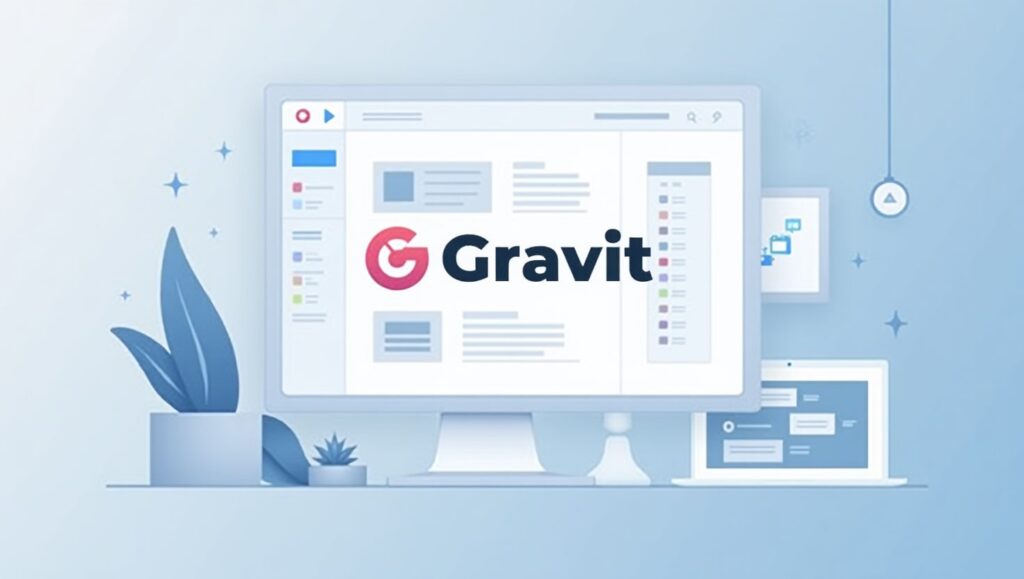
Type: Free & Paid (Gravit Designer Pro)
Platform: Web, Windows, macOS, Linux, Chrome OS
Gravit Designer offers a clean interface with essential tools for vector design. It’s ideal for creating UI designs, presentations, and illustrations, all from your browser.
Key Features:
- Works online and offline
- Modern user interface
- Cloud syncing
- Easy export options
Why it’s great for beginners: The learning curve is gentle, and it doesn’t require a powerful computer to run.
5. Vector – Free Vector Tool
Type: Free
Platform: Web, Windows, macOS, Linux
Vector is a completely free vector graphic design tool with a simple interface. It’s great for basic logos, icons, and infographics.
Key Features:
- Real-time sharing
- Simple and clean interface
- Free tutorials available
- Lightweight and fast
Why it’s great for beginners: Best graphic design tools for beginners without getting overwhelmed by advanced features.
6. Inkscape – Open Source Alternative
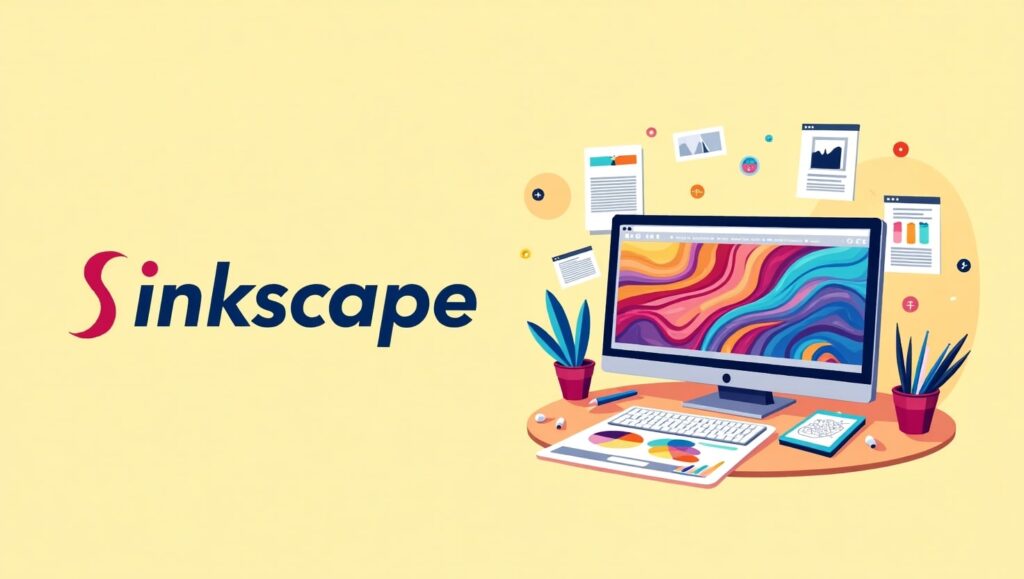
Type: Free (Open source)
Platform: Windows, macOS, Linux
Inkscape is a powerful free vector graphics editor that’s often compared to Adobe Illustrator. As an open-source tool, it has a strong community and regular updates.
Key Features:
- Advanced drawing tools
- Layer support
- File compatibility (SVG, AI, PDF)
- Custom extensions and add-ons
Why it’s great for beginners: Great for those who want full control over their design tools without paying for software.
7. Affinity Designer – Professional Quality at One-Time Cost
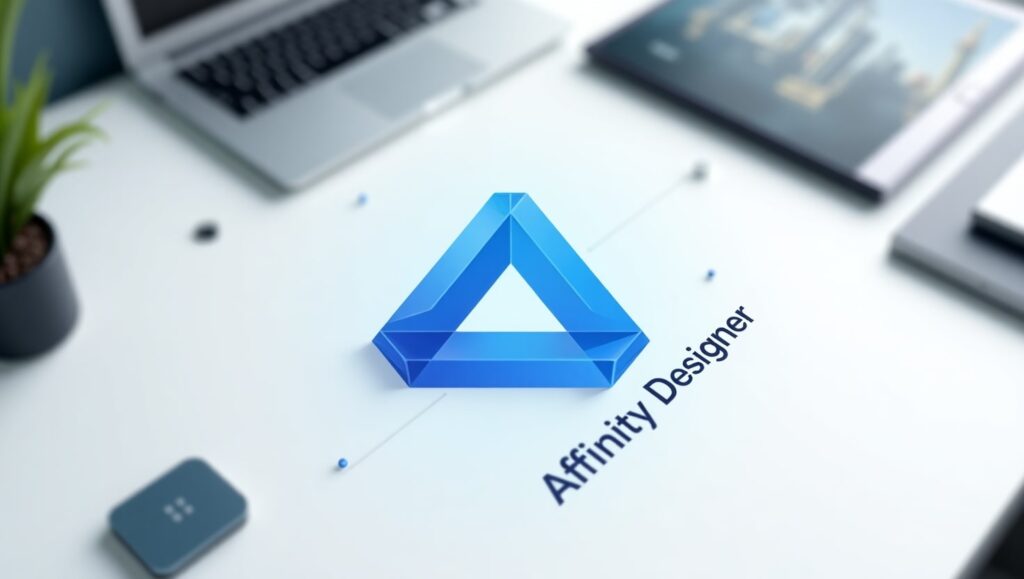
Type: Paid (One-time purchase)
Platform: Windows, macOS, iPad
Affinity Designer is a cost-effective alternative to Adobe Illustrator, offering professional features at a one-time price.
Key Features:
- Smooth vector and raster integration
- Responsive and lightweight
- Grid, snapping, and alignment tools
- Cross-platform performance
Why it’s great for beginners: Once purchased, you get lifetime updates. It’s a great investment without a subscription.
8. Pixlr – Easy Photo Editing
Type: Free & Paid
Platform: Web, iOS, Android
Pixlr is a lightweight photo editing tool that runs right in your browser. It’s perfect for beginners who want to edit images quickly for social media or blogs.
Key Features:
- AI-powered one-click edits
- Web-based—no downloads required
- Supports layers and effects
- Simple interface
Why it’s great for beginners: You can start editing without creating an account. Very beginner-friendly.
9. Krita – Digital Painting & Illustration
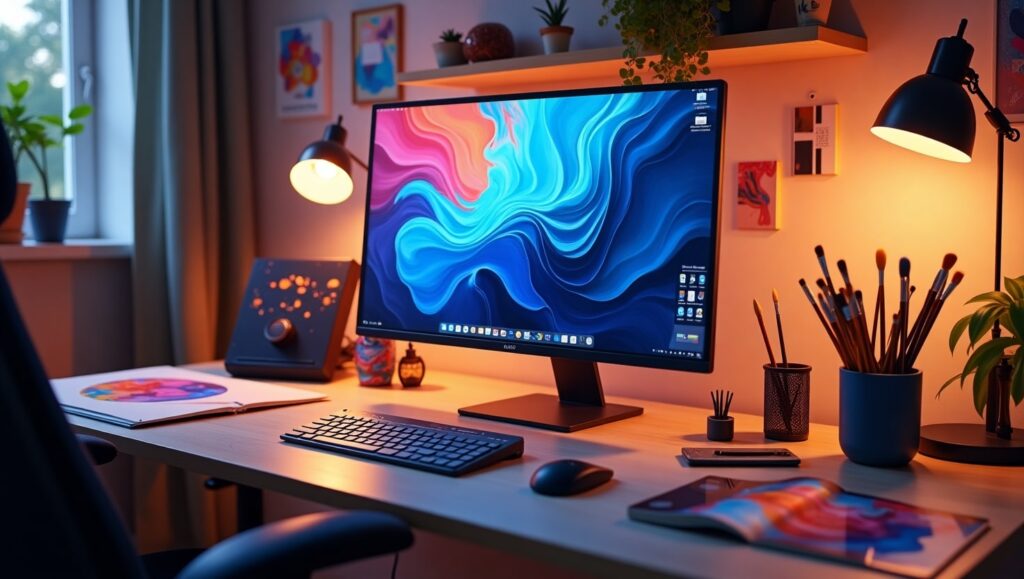
Type: Free (Open source)
Platform: Windows, macOS, Linux
Krita is best suited for digital illustration and painting, but it also offers graphic design tools for layout and composition.
Key Features:
- Brush customization
- Layer management
- Animation support
- Tablet-friendly interface
Why it’s great for beginners: Excellent for beginners interested in drawing and concept art.
10. Desygner – Mobile-Friendly Graphic Design
Type: Free & Paid
Platform: Web, iOS, Android
Desygner is a drag-and-drop graphic tool aimed at social media creators, bloggers, and marketers. It’s one of the easiest tools to use on a smartphone.
Key Features:
- Pre-made social media templates
- Mobile-first design
- Royalty-free image library
- Branding kit support
Why it’s great for beginners: If you’re creating graphics on the go, this is a must-have.
Tips on Choosing the Right Tool
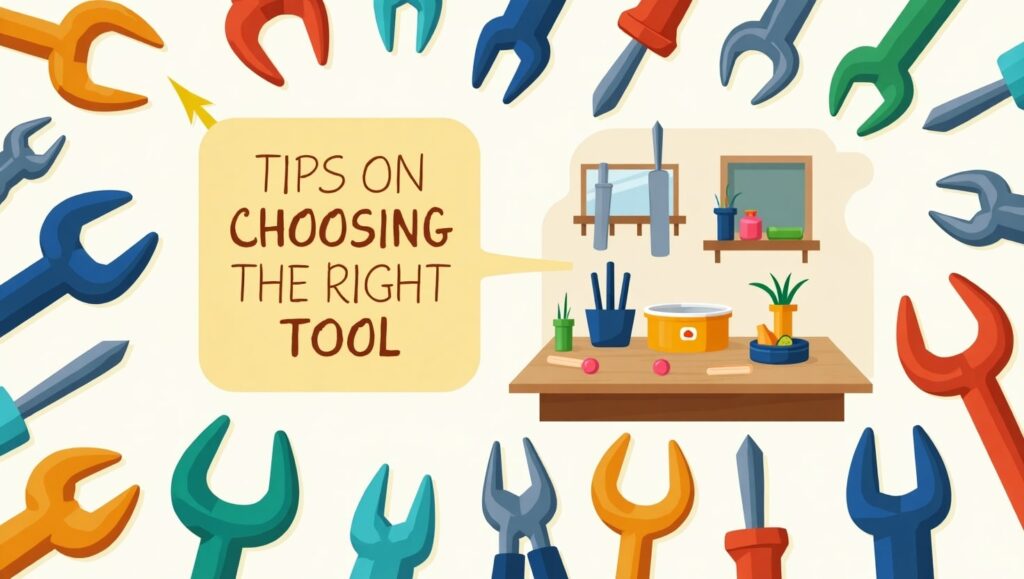
Choosing the best graphic design tools for beginners tool depends on your goals and workflow. Here are a few tips to guide your decision:
- Start Free: Explore tools like Canva, Vectr, and Inkscape to learn the basics without investment.
- Consider Your Goals: If you want to go professional, tools like Adobe Illustrator or Affinity Designer are worth learning.
- Try Before You Buy: Use free trials to test paid tools before committing.
- Use Community Resources: Many tools have active communities, free tutorials, and forums to help you learn faster.
- Match Tool to Task: Photo editing? Use Pixlr. UI design? Try Figma. Logo creation? Go with Illustrator or Vectr.
FAQ
What is the best free graphic design tool?
Canva is the best graphic design tools for beginners widely considered the best graphic design tools for beginners due to its ease of use, professional templates, and accessibility on all devices. For vector design, Inkscape is a top free choice.
Are paid tools worth it for beginners?
Yes, Best graphic design tools for beginners if you’re committed to building a career or serious hobby in graphic design. Tools like Adobe Illustrator and Affinity Designer offer features you’ll eventually need as your skills grow. However, you should explore free tools first to see what suits your style.
Conclusion: Start Simple, Grow Gradually
Every graphic designer starts somewhere. The key is to start simple—best graphic design tools for beginners, explore its features, and grow your skills at your own pace. Whether you begin with Canva, dive into Figma, or experiment with Inkscape, the most important thing is to keep creating.
Once you’re comfortable, consider investing in professional tools that open up even more creative possibilities. With the right tools and consistent practice, you’ll be creating stunning graphics in no time.
Graphics Design
Top 7 Essential Ways to Make T-Shirt Painting Design
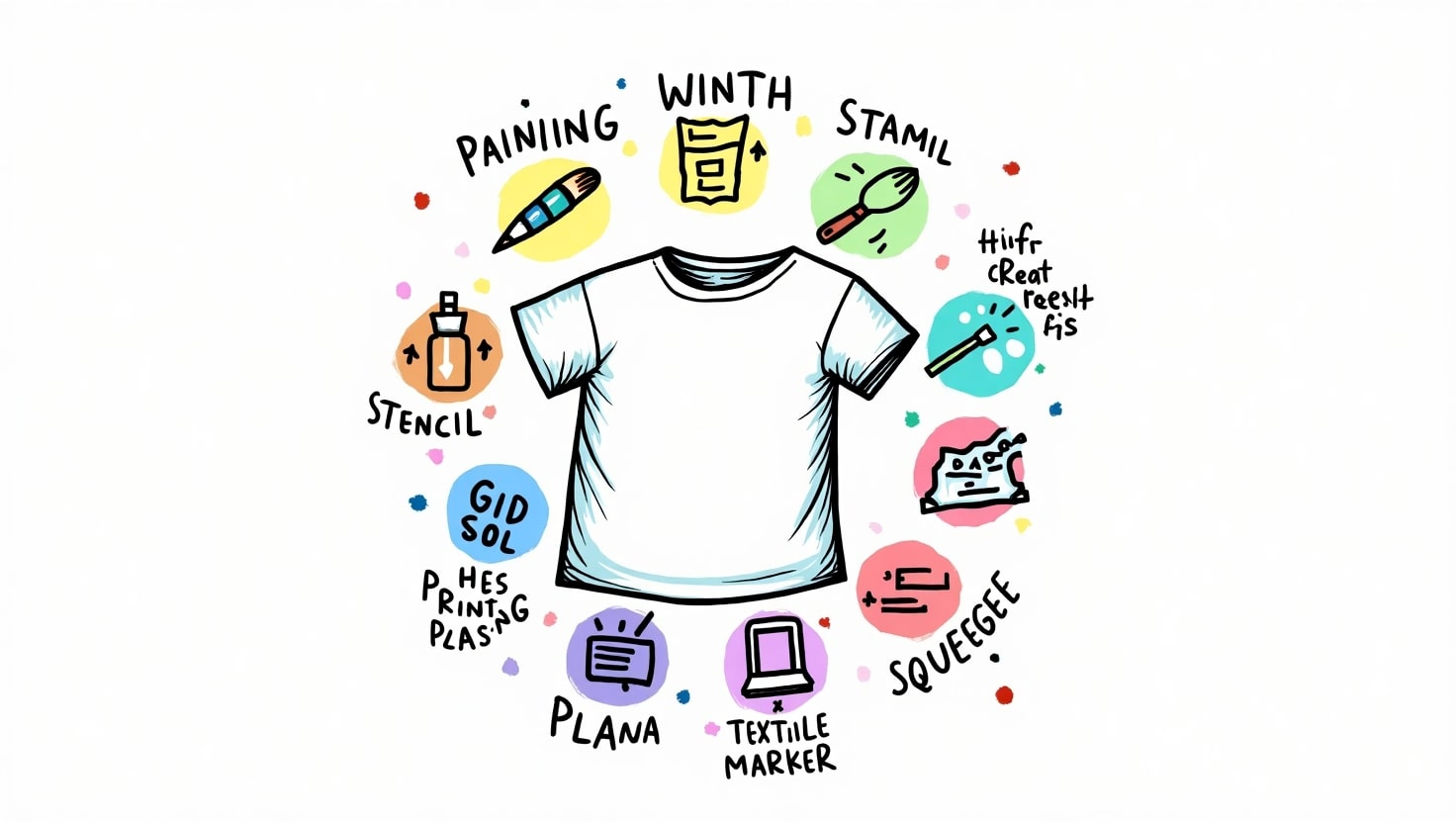
Top 7 Essential Ways to Make T-Shirt Painting Design
T-Shirt Painting Design can be a great tool of creativity or creation of a fashion identity or even a business. T-Shirt Painting can be a gateway to unending crafts no matter whether this would be your first or fourth attempt in painting. In this article, we are going to guide you on the 7 best methods on how to make t-shirt painting design stand out, how to do it, what to use, what style, and some tips on how to make custom t-shirt painting better without fail.
What is T-shirt Painting Design?
T-Shirt Painting Design is a decoration process of painting or ink on a piece of cloth, generally t-shirt, to come up with a unique picture. It is a form of clothing art in which an artist, fashion admirer or hobbyist can express themselves creatively in something that they can use daily. T-shirt painting design can express mood, culture, personality and even be used to champion a cause; miniature paintings to splashes of abstract colors.
DIY trend, sustainability and fashion individuality have rocketed the popularity of the t-shirt painting within the past years. Well, now we are to see the seven most useful techniques that can help you to master this exciting art.
1. Select The Appropriate T Shirt Base and Fabric
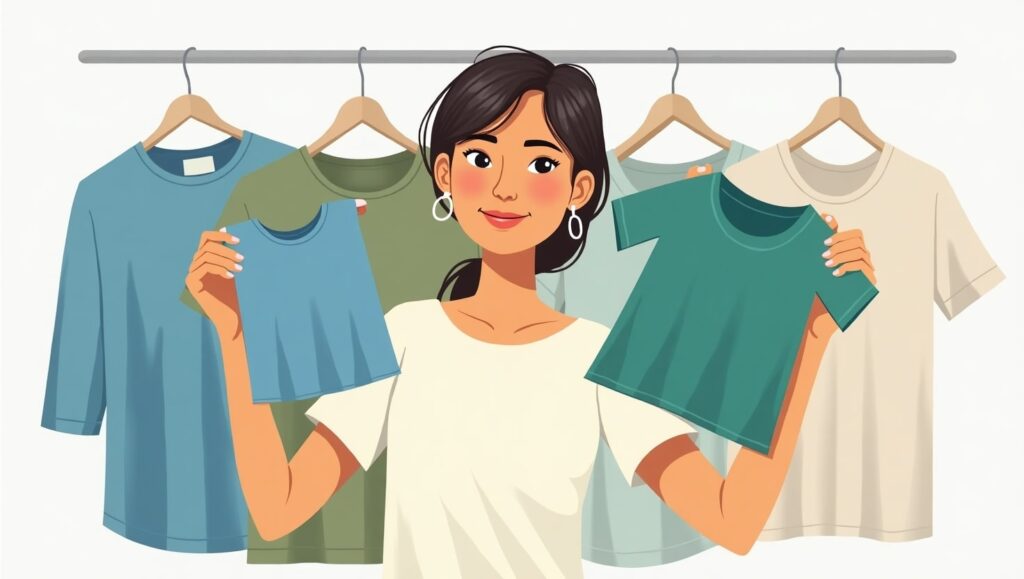
A t-Shirt Painting Design is the basis of every magnificent t-Shirt Painting. The choice of the material influences the quality of the adhesion of the paint, the hues of the palette and the durability of the design once washed.
The ideal fabrics of T-Shirt painting design:
- 100 percent Cotton: Trapping moisture is high on the scale and paint adhesion can also be achieved as well.
- Cotton-Poly Blend: Less absorbent and more long lasting.
- Bamboo or Organic cotton: an environmental-friendly and sustainable t-shirt painting design material.
Ensure that the t-shirt has already undergone a process of washing in order to draw away any factory treatment or shrinking. Get the finest painting experience on a smooth, non wrinkly surface.
2. Gather the Right Supplies
Without proper tools, even the most creative ideas for a t-shirt painting design can fail. Here’s a checklist of essential supplies:
Basic Materials:
- Fabric Paint (Acrylic-based or Water-based)
- Fabric Medium (optional, helps paint bond better)
- Paintbrushes of varying sizes
- Sponges or Rollers
- Palette or Mixing Tray
- Fabric Markers
- Pencil/Chalk (for sketching)
- Cardboard Insert (to avoid bleed-through)
These materials ensure your t-shirt painting design stays sharp, professional, and vibrant.
3. Sketch and Plan Your Design
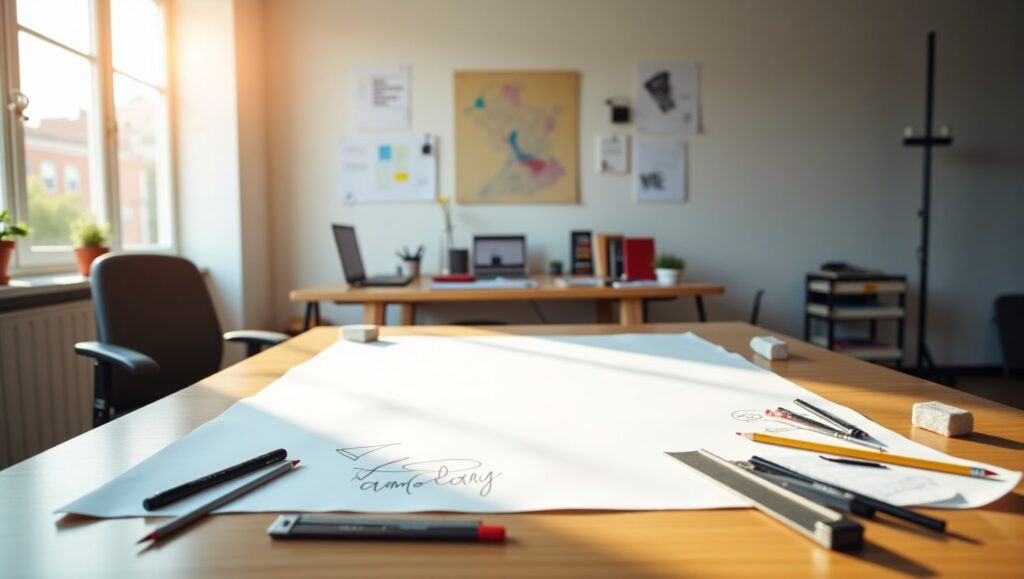
Before you dip a brush into paint, sketch your t-shirt painting design on paper or use a digital mockup tool. Planning is critical, especially for intricate designs.
Tips for Sketching:
- Start with light outlines.
- Consider color placement and negative space.
- Use stencils if you’re aiming for precision.
Planning your t-shirt painting design reduces mistakes and speeds up the painting process. You can even use transfer paper to trace your design onto the fabric if you’re not confident in freehand sketching.
4. Learn Different Painting Techniques
There are multiple ways to apply paint to a t-Shirt Painting Design. Understanding the right technique for your t-shirt painting design will make your artwork more dynamic.
Popular Painting Techniques:
- Freehand Brush Painting:
- Great for artistic expression and detailed artwork.
- Stencil Painting:
- Perfect for logos, patterns, or text. Ensures consistency.
- Sponge Painting:
- Adds texture and gradient effects to your t-shirt painting design.
- Splatter Technique:
- Offers a trendy, modern vibe. Use with contrasting colors.
- Block Printing:
- Involves carving a design into a stamp and repeating the pattern.
Each technique contributes something unique to the final look of your t-shirt painting design. Don’t hesitate to mix methods for a layered effect.
5. Learn to Use colors
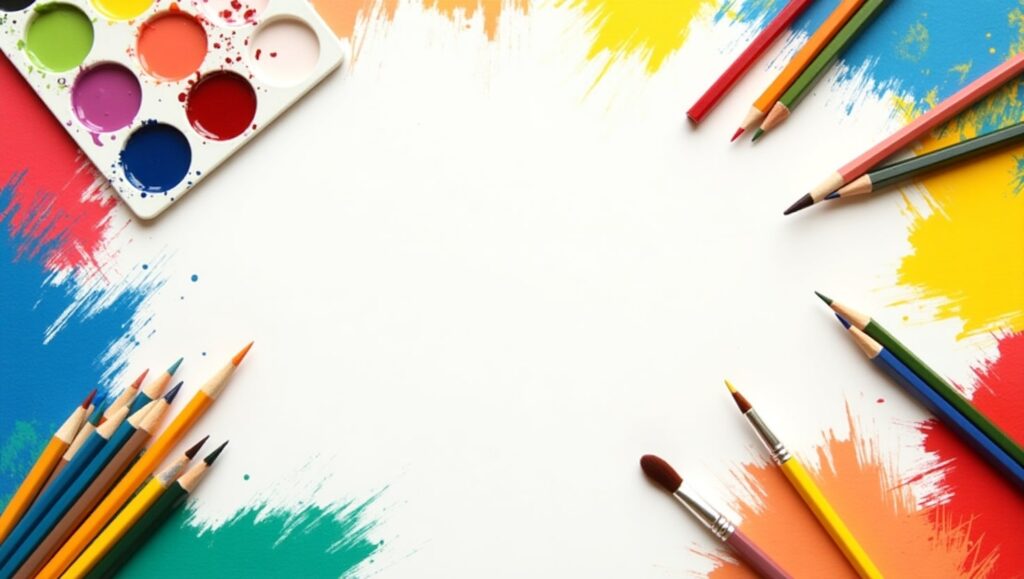
The color theory is very relevant in the area of painting t-shirts. Navigating a basic design with the compulsory color palette can turn a design to a work of art.
Know How to Select Colour:
- Take bold contrast by using complementary colors.
- Similar tints to bring out harmonious vibes.
- Apply white or black to make outlines/highlights.
Bear in mind that not all colors can be similar on textile and paper. Always test a small patch in case you want complete painting of t-shirt.
6. Use Fixing and Heat Fixing Methods
When you have painted your masterpiece that is the time to put the colors on so that they can be washed and worn.
T-Shirt Painting Design: Fixing Methods:
- Ironing: Apply a cloth or parchment paper on the painted area and press using medium heat setting on the iron within 3 to 5 minutes.
- Air-Drying: Leave your t-shirt painting design to dry up at least 24-48 hours.
- Heat Press: professional way of commercial-grade finish.
The paint is then sealed under the heat setting so it does not crack or fade, thus sealing into the fibers of your t-shirt painting design.
7. Care of Your Painted T Shirts
When the t-shirt painting is properly taken care of, then you get a long lasting life of the design and it remains vibrant.
Cleaning & Storing Information:
- Inside out wash in cold water.
- Never use bleach or strong detergents.
- Line dry or tumble low or machine dry.
- Iron inside-out, as required.
Once you have made something really well, you can be sure that your t-shirt painting design will keep shining all through the years.
Some Creative Ideas to Design T-Shirt Painting
Are you short of ideas? The popular t-shirt painting design themes are the following:
Minimalist Quotes
- Nature-based Patterns
- Graffiti and Street Style Painting
- The pop culture and Anime
- Geometric designs
- Motifs Tribal and Ethnic Motifs
- Personalized Name/Initials
The ideas can assist you to stimulate creativity and reach out to the target audience or customers.
The reason T-Shirt Painting Design is ideal with small businesses
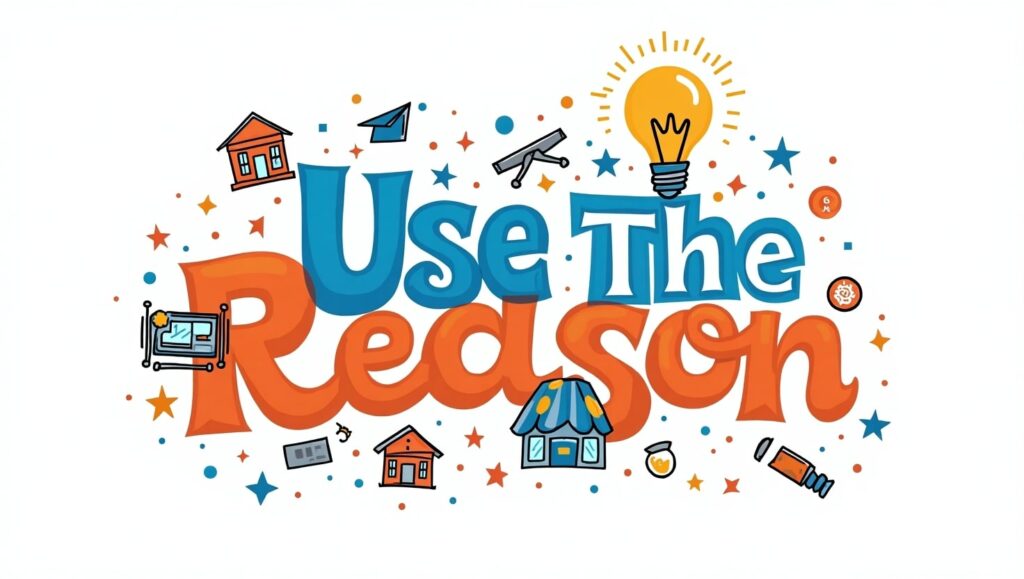
T-shirt painting design is also beautiful since the cost is cheap with high profit margin. These designers, painters, and designers are turning the ability to make money by selling personalized tees either online or in local fairs.
The advantages of T-Shirt painting Design as Business:
- No huge stock-out is needed.
- It is possible to tailor every design to the targeted niches.
- Handmade and green-friendly.
You may even provide customized t-shirt painting design services to such platforms as Etsy, Instagram, or your WordPress online store.
Questions and answers on T-shirt painting design
Q1. What should I use as a medium to paint t-shirt painting design, can I use normal acrylic paint?
Sure but in some fabric medium so that it does not crack and leave a soft finish.
Q2. How do I avoid loosing the paint in the washing?
After getting your paint design on your t-shirt completely dry, always take it and heat set it using an iron or heat press.
Q3. Which is the best color of t-shirt to be used?
T-shirts that are white and light in color are ideal for colored effects, but another to get dramatic effects is to use black t-shirts and use opaque or metallic paints.
Q4. What is the lifespan of painted t-shirt?
Well improvised t-shirt painting design will take a long time even after a lot of washings before it will begin to fade away.
Q5. Are children allowed to do t-shirt painting designs?
Absolutely! Just use paint that is washable and non toxic and monitor them as they set the heat.
Conclusion
The t-shirt painting design can be mastered by all types of artists, hobbyists, and business people. Selecting the appropriate fabric, preparing the design, printing it on, and employing the final heat fix, there are tips and methods to every process, which makes the result a beautiful and lasting t-shirt painting design. These 7 methods will determine what colorful and professional results you would achieve when creating a one-off work of your own or planning to launch a fashion brand.
The more you practice regularly and creatively, the more you will master t-shirt painting designs, and welcoming the world of art and even money.
Graphics Design
Essential Graphic Design Skill List for Freelancers
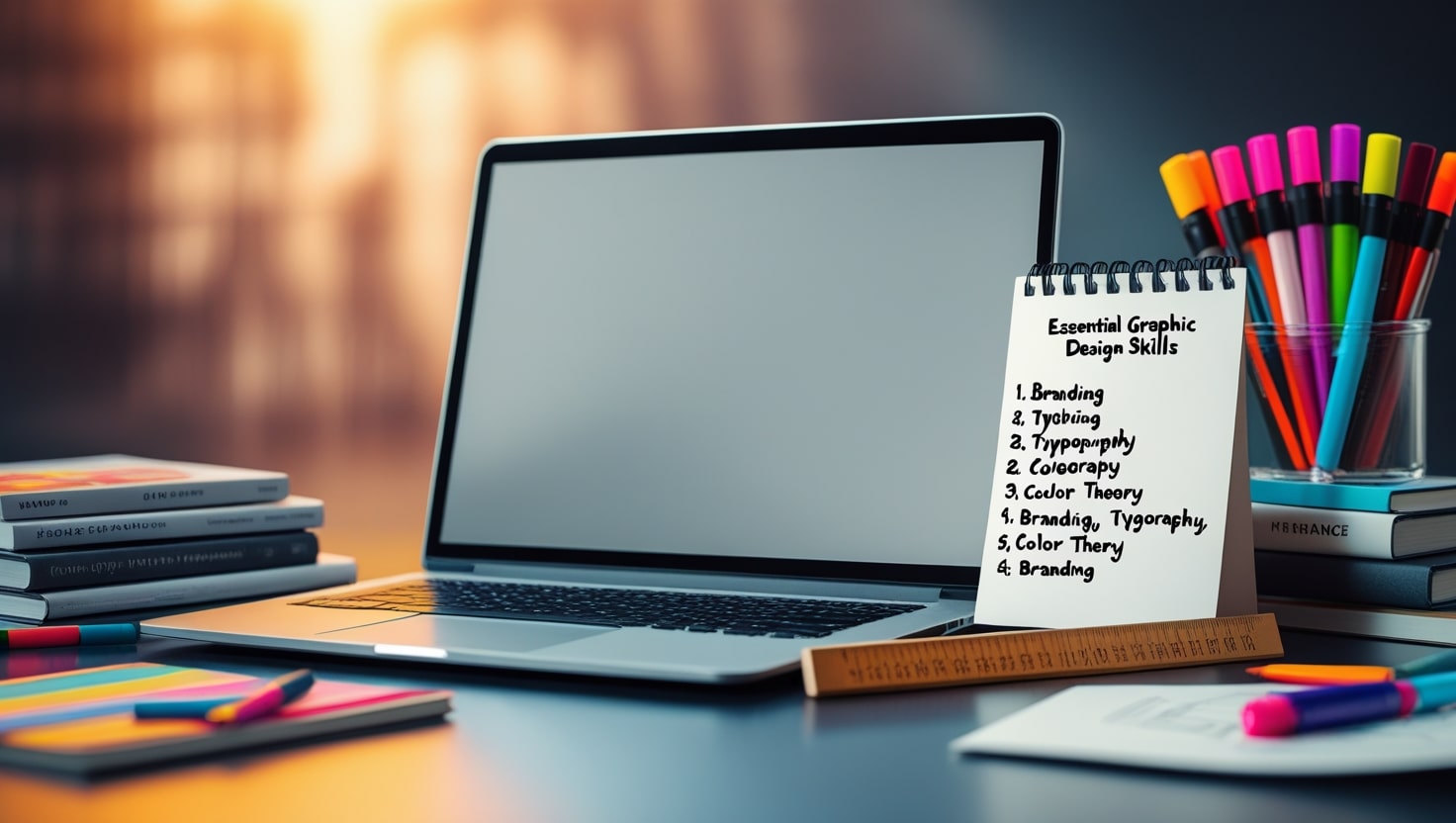
Essential Graphic Design Skill List for Freelancers
Graphic design skill list nowadays, it does not suffice to be a talented freelance designer in the way of the fast-moving creative economy. It demands balanced skill set of graphic designs that entails technical and soft skills. As a beginner or someone seeking to advance their career, being great in the basic graphic design skill list can also pave the way to greater clients, more money, and ultimate success in the relationship.
We will discuss all the skills you have to cover in your graphic design skill set, starting with basic tools and culminating in the skills required by a professional graphic designer. We will also discuss why these skills are important and how to master them as well as how to utilize them to get the right clients and projects depending on your expectations.
1. Graphic Design Skill List Introduction The Graphic Design Skill List is an important attribute of a Graphic Designer.
The graphic design skill list abilities that you have is your toolkit as a freelancer. It comprises all the knowledge about software along with thoughtful planning, interaction and communication with clients, and developing the identity of a brand. The fact that having a structured graphic design skill list list will not only enable you to analyze your capabilities as well as shortcomings, but also offer you easy time to sell your services.
The majority of businesses are heading towards freelance professionals to serve them with creative problems such that a present and relevant list of graphic design skill list will make sure that you stay ahead of others in this highly competitive industry.
2. The issue of acquiring a skill set among freelancers.

In contrast to agency designers, freelancers do not get the luxury of riding on a team. You are the designer, the project owner, the marketer and the communicator. Thus, it is vital to develop a rich and robust skill set of a graphic designer to your independence and development.
Having a comprehensive list of graphic design skill list also creates self-confidence among the clients. It demonstrates that you can also work with an impressive range of assignments: both coming up with graphic design skill list to place on social media and creating a whole brand identity.
3. The Basic Skills required by Every Freelancer in Designing
You should not run with sophisticated tools or some specific designs that you might be familiar with at an early stage. The basic list of the graphic design skill list comprises:
- Design principle (contrast, balance, alignment, repetition)
- Design of composition and layouts
- Visual hierarchy
- Simple form drawing or wire framing
- Thinking and problem solving design
These are fundamental aspects that these skills in professional graphic designing revolve around. In their absence, your visuals might not be coherent or even effective, regardless of their apparent visual attractiveness.
4. High-end Graphic Designing Techniques
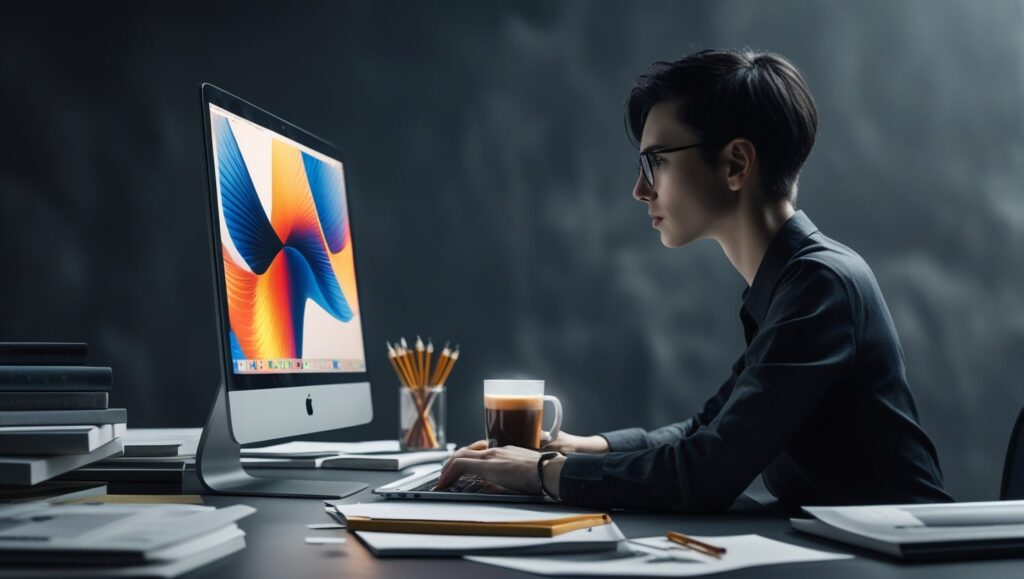
When you already managed to master the basics, it is high time to enter some more sophisticated elements of your graphic design skill list set:
- Photo manipulation and editing
- Vector drawing
- Icons design
- Infographic design
- The fine use of layering and masking
Such advanced skills will enable you to take on more involved projects such as packaging design, editorial layouts, or a digital campaign that will increase your worth as a freelancer.
5. The Accommodation Skill list of Graphic Design Software Proficiency

Your knowledge of some major design software is one of the most important elements of your graphic design skills list. As a freelancer you have to feel comfortable with the best tools of the industry:
- Adobe Photoshop: Digital painting and photo editing
- Adobe illustrator: Vector graphic and logo design
- Adobe InDesign: documents/publications with three or more pages e.g. brochures, eBooks
- Figma/Sketch/XD: UI/UX and Web Graphic Design
- Canva: Rapid template-based design Canva can be used to create beautiful templates in very little time.
The more tools you will be able to learn and to expand the list of tools on your set of skills of graphic design skill list the more you become versatile and employable.
6. Skills in Type and Design
Typography is also what it takes to make or break a design. When you combine this knowledge to your graphic design skill list set, then you comprehend:
- Pairing and contrast of fonts
- Space and legibility
- Typographical hierarchical use
- Balance in grids and layouts
This is why freelancers who are experts in typography are mostly recruited when encountered with branding, editorial, and advertising work where text is as equally important as imagery content.
7. Theory and practice in Color
The good design is very dependent on a proper color application. Ensure your skill set in graphic designing has:
- The knowledge of the color modes (RGB vs CMYK)
- Psychology of colors
- the palette making
- Harmony and contrast of color
Clients will usually wish to have their brand colors to elicit certain emotions and practicing color theory will help you add value to your company as a freelancer.
8. Branding and Image Design
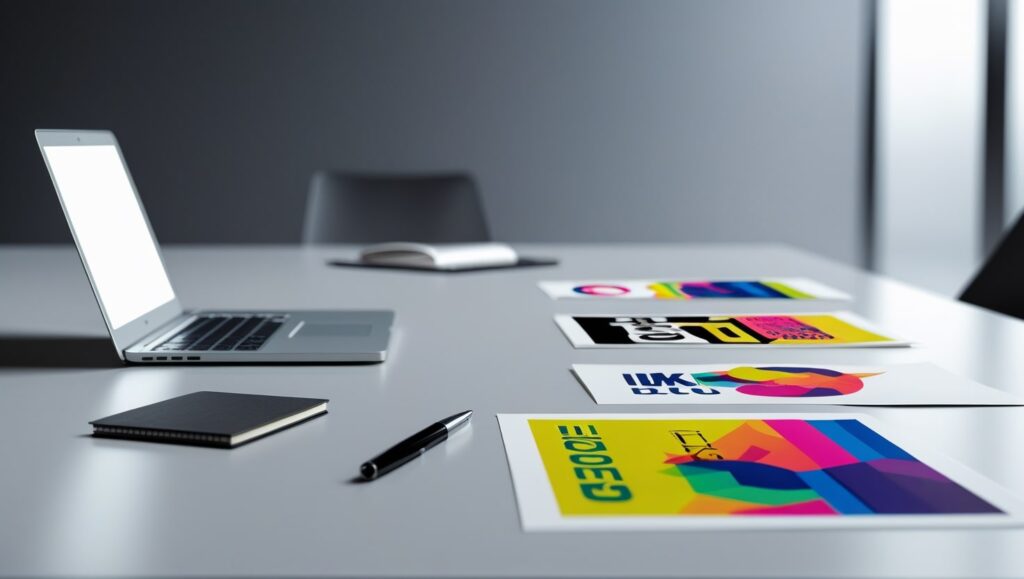
Branding expertise can help a freelancer earn good money on huge projects. To your list of graphic design skill list add the following:
- Logo designing
- Brand strategy and mood boards
- Brand guidelines
- Graphical narrations
Branding identities go beyond creation of logos but include deciphering how a company should communicate in terms of graphics; it is on the platform.
9. UX/UI Designing Skills as a Freelancer
Freelancers capable of providing UX/UI services are usually paid higher. Completing the list of your graphic design skill list with UX/UI means:
- Drawing wireframes and prototypes
- User journey mapping
- Designing mobile-first
- UI Design of the app/ Web
Such competencies are quite desirable with companies focusing more on digital user experience.
10. Motion Graphics and Animation
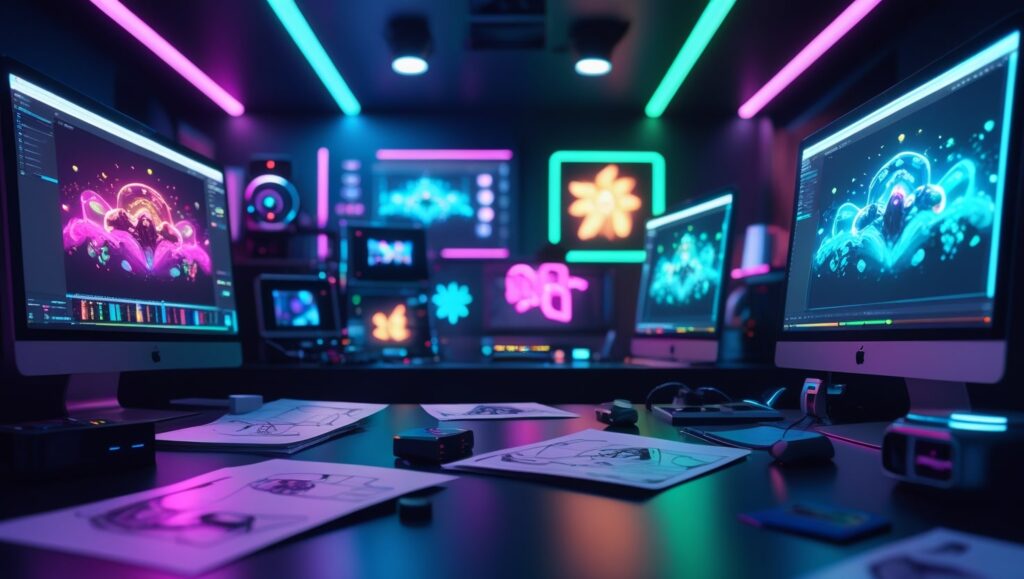
The digital space is taken over by motion. Motion design is something that sets you apart in the list of graphic design skill list. Get to know such tools as:
- Animations will be in After Effects
- Lottie on the web-based animations
- GIF making and video hacks
Even simple motion skills make a still stand, it allows creating a dynamic experience, ideal to share on social media and advertisements.
11. Collaboration and Communication skills
Soft skills are good elements of a graphic design skill list as well. You will have to be able to:
- An excellent skill at explaining things
- Know the needs of clients
- Treat feedback in a professional manner
- Liaise with other artists or marketers
Effective communication leads to the flow of work, improved success of projects and repeat clients.
12. Time and Project Management
Freelancers have to work on different projects. Time management should, therefore, find its place on the list of your graphic design skill list:
- Working with such an application as Trello, Notion, or Asana
- Maintaining due date and revisions
- Invoicing and ability to follow up clients
These are some of the productivity habits that enable you to be professional and you achieve expectations.
13. Marketing Freelance Designer
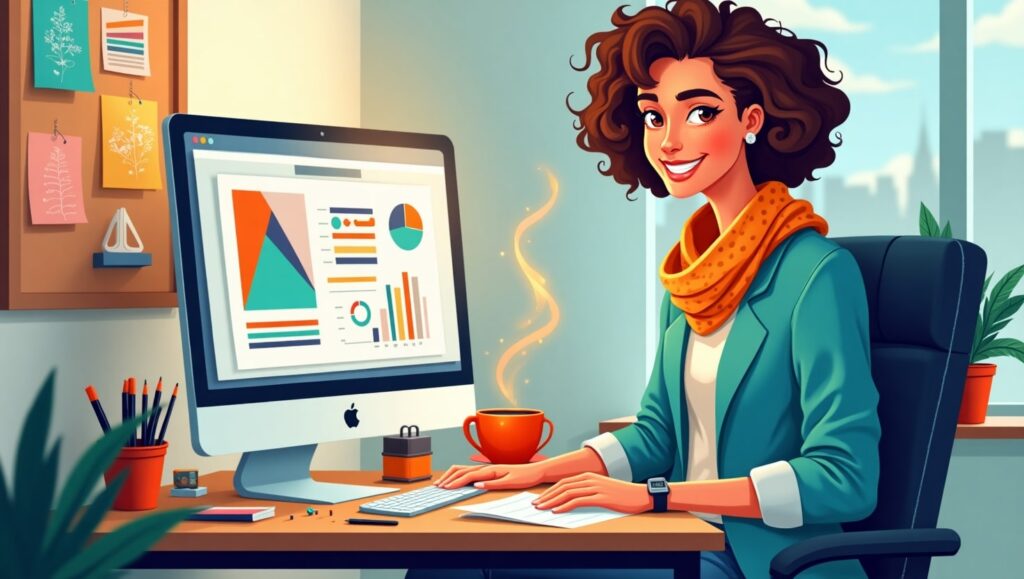
Self marketing is one thing that you never had to write on your list of graphic design skill list, but what you really need to do:
- Creation of a portfolio site
- Sharing work via social media
- Authorship of blogs or case studies
- Social networking on the web
The greatest designers cannot cope, when they are not visible. Marketing converts your talents into money making.
14. Your Application of Graphic Designs List in the Real World

Your graphic design skill list should match the demand in the market. Put your abilities to:
Branding and logo assignments
- Designing of websites
- Digital advertising resources (ads, banners, email)
- Printed resources (flyers, business card)
- e-commerce Designs of products
A variety in the application of your graphic design skill list also enhances your reputation and gets a variety of clients.
15. What are the Ways of Developing Your Skill Set Continuously?
The artistic world is evolving rapidly. Make sure your graphic design skill list is not obsolete by:
- Doing online courses (Skillshare, Coursera, YouTube)
- Research of design fashion
- Doing it every day
- Asking another peer or even a mentor
The best freelancers are those who never stopped learning. Each new skill that you develop can translate to work that is of higher value.
16. FAQs
Q1. What must be in freelance graphic design skill list?
The freelance graphic design skill list must enroll software expertise, design philosophy, branding, constructing, user interface/user experience, commitment management, and organizational communicational proficiency.
Q2. What can I do to add to my list of skills in graphic design?
Continuously expand your list of graphic design skills by taking online courses, working on real-life projects, keeping up with design trends, and learning more through feedback by your mentors.
Q3. What is the importance of a graphic design skill list to freelancers?
It will make you competitive, versatile, and allow you to gain trust by potential clients because it will be evident what you are able to provide.
Q4. Is it possible to freelance when my graphic design list of skills is not very long?
Yes, but it will be limited by what you can do. Begin with the basic skills and slowly increase your freelance career with some extended skills list in graphic design.
Q5. Which skill is the most needed in a list of graphic designs skills today?
The same goes with UX/UI design, motion graphics, and branding opportunities that are highly sought as freelance assignments.
17. Final Thoughts
This is the most valuable resource a freelancer can have a checklist of graphic design skills. Not only will it make your work better, but it increases your confidence and credibility as well. With the combination of technical and soft skills you will become a trustful and multi-tasking designer that clients would not mind hiring again.
You are about to have a fresh start or a long time established and it is your time to look back, improve, and add some new things to your list of graphics design skills. It is a fact that success lies in the hands of those who are well equipped- so develop your talents, present them in a way they are attractive, and keep stretching your creative boundaries.
-
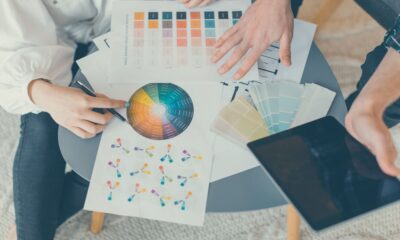
 Graphics Design1 year ago
Graphics Design1 year ago7.Exploring the Importance of Color Theory Charts
-

 Graphics Design10 months ago
Graphics Design10 months ago10 Stunning Gradient Design Trends You Need to Know in 2024
-

 Graphics Design1 year ago
Graphics Design1 year ago15.The Importance of Effective Flyer Design in Marketing
-
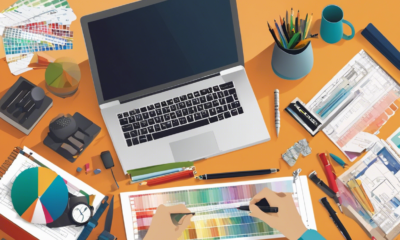
 Graphics Design1 year ago
Graphics Design1 year ago14.Mastering the Art of Print Design: Tips and Tricks
-
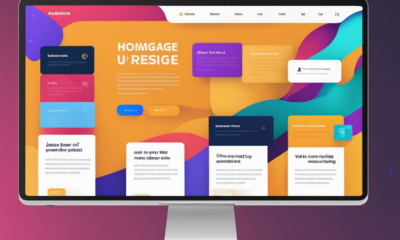
 Graphics Design1 year ago
Graphics Design1 year ago10.The Latest Trends in Web Design and Development
-

 Graphics Design1 year ago
Graphics Design1 year ago29.Retro Design Is Making a Comeback in Modern Spaces
-
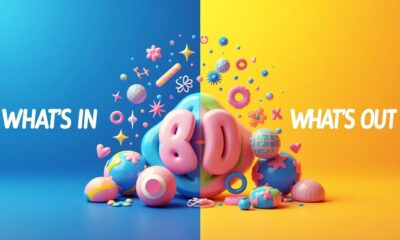
 Graphics Design5 months ago
Graphics Design5 months ago2025 Logo Design Trends: What’s In, What’s Out?
-
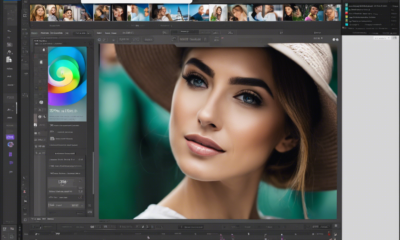
 Graphics Design1 year ago
Graphics Design1 year ago13.Exploring the Latest Trends in Photo Editing Software





Tech to Force
September 11, 2024 at 1:49 pm
Tech to Force I really like reading through a post that can make men and women think. Also, thank you for allowing me to comment!
Simply sseven
September 12, 2024 at 6:02 pm
Simply Sseven I very delighted to find this internet site on bing, just what I was searching for as well saved to fav
Muhammad Ubaid
September 12, 2024 at 8:38 pm
Thank you
And more support plzz
Skapa personligt konto
September 24, 2024 at 9:55 pm
Your point of view caught my eye and was very interesting. Thanks. I have a question for you.
BYU Cougars
October 15, 2024 at 12:10 pm
BYU Cougars This is really interesting, You’re a very skilled blogger. I’ve joined your feed and look forward to seeking more of your magnificent post. Also, I’ve shared your site in my social networks!
Masalqseen
October 15, 2024 at 6:26 pm
Masalqseen This was beautiful Admin. Thank you for your reflections.
Register
November 29, 2024 at 7:06 am
Thanks for sharing. I read many of your blog posts, cool, your blog is very good.
Create Personal Account
December 9, 2024 at 12:59 am
Your article helped me a lot, is there any more related content? Thanks!